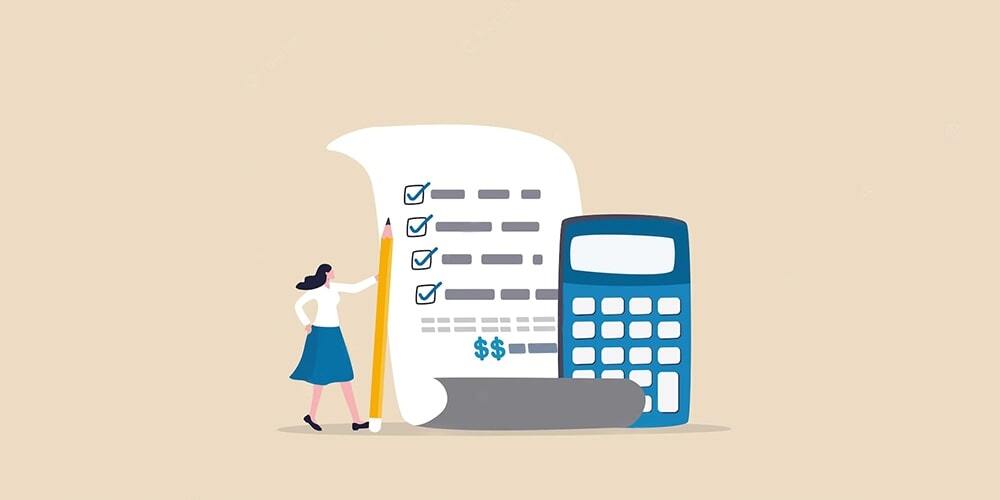
Churnfree | A Look at Customer Churn Rate
14 mins readOct 20, 2022

You can do various things to keep your customers returning, but all it begins with is offering them a unique experience that meets their demands and exceeds their expectations.
Here is what happens:
When users are dissatisfied, they stop using your products and services. It’s that simple. The more users that choose to call off, the less you grow. If you want to retain your users, you immediately need to handle customer churn.
Customer churn significantly affects your business as it reduces revenues and profits. Yet astonishingly, over 2 out of 3 firms have no churn retention strategy.
Every business loses customers, but every company deals with it differently. Some of them quickly find all the reasons and try to repair the loss by implementing customer retention strategies.
What is Customer Churn?
Customer churn, also known as customer attrition, refers to the percentage of customers who stop doing business with a company over time. There can be several factors your customers decide to churn, such as poor customer service, high prices, or a competitor offering better products or services.
There are two main types of customer churn: voluntary and involuntary. Voluntary churn occurs when customers choose to leave on their own accord, while involuntary churn happens when companies cancel accounts or terminate services due to non-payment or other reasons.
Businesses should always strive to reduce both voluntary and involuntary churn rates. Some ways to do this include improving customer service, offering discounts or loyalty programs, and regularly conducting customer surveys to get feedback on what could be improved.
What is a Good Customer Churn Rate?
There are a few things to remember when trying to answer this question. First, it’s essential to know what your industry average is. It will give you a benchmark to compare your own business. Second, remember that there is no magic number for customer churn. What might be considered a reasonable rate for one company might not be the same for another.
So, what is a good customer churn rate? Eventually, it depends on your specific circumstances and goals. However, as a general guideline, most companies aim for a customer churn rate of 5% or less. That means for every 100 customers, and only five should leave in a year.
What is a Negative Churn Rate?
A negative churn rate is a situation where your customer base grows rather than shrinks. In other words, you’re not only retaining your customers, but you’re also adding new ones at a faster pace.
Achieving a negative churn rate is essential for any business, but it’s especially critical for subscription-based businesses. These companies rely on a consistent stream of recurring revenue to stay afloat. Keeping the lights on can quickly become complex if revenue starts to decline.
There are a few ways to achieve a negative churn rate. The most obvious is having more customers sign up than canceling their monthly subscriptions. But you can also increase the average lifetime value of your customers by selling them additional products or services or by expanding the usage of your product within their organization.
How do you Calculate Customer Churn Rate?
There are a few different ways to calculate the churn rate. Still, the most common method is to take the number of customers who cancel their service within a certain period and divide it by the total number of customers you had at the beginning.
For example, let’s say you had 100 customers at the start of January, and 10 of them canceled their service by the end of February. Your churn rate would be 10% since 10 out of 100 customers (or 1 out of 10) left your service.
Types of Churn
Four different types of churn can occur in a business, that includes;
Customer churn
Revenue churn
Gross churn
Net churn
Customer Churn
Customer churn occurs when customers stop doing business with a company. This can happen for various reasons, such as poor customer service, high prices, or simply because they found a better deal elsewhere. When customer churn happens, it can be costly for a company to lose out on revenue they were counting on.

Revenue Churn
Revenue churn is a metric that measures the revenue a company loses monthly or yearly. This metric is essential for companies to track because it can help them identify areas where they lose customers and revenue.
There are two main types of revenue churn: customer churn and product churn. Customer churn occurs when customers cancel their subscriptions or stop using a product. Product churn happens when a company discontinues a product or service.
Revenue churn can be caused by many factors, such as poor customer service, high prices, or competitor activity. To reduce revenue churn, companies need to identify the root causes and address them accordingly.
Customer retention is key to reducing revenue churn. Companies should focus on providing excellent customer service and creating loyalty programs to retain customers. In addition, companies should regularly review their pricing strategy to ensure they are not charging too much for their products or services.
Gross Churn
Gross churn is the percentage of customers that cancel their subscription or service within a given period. It’s a metric that companies closely watch to gauge customer satisfaction and retention.
There are two types of churn: gross churn and net churn. Gross churn includes all customers who cancel, while net churn only includes customers who cancel and doesn’t consider new customers.
Gross churn is usually higher than net churn since losing a customer is easier than gaining a new one. For this reason, companies typically focus on reducing gross churn first and foremost.
There are many ways to reduce gross churn, such as offering discounts or incentives for renewing early, increasing communication with customers about upcoming changes or features, or improving customer support.
Net Churn
The net churn rate is simply the difference between these two numbers. It’s calculated by subtracting a company’s customer churn rate from its revenue churn rate.
It can give you insight into whether or not a company is sustainable in the long run. If a company has a negative net churn rate, then it means that it’s losing more money than it’s bringing in and will eventually go bankrupt. On the other hand, if a company has a positive net churn rate, it’s making more money than it’s spending and is, therefore, sustainable in the long run.
10 Ways to reduce customer churn rate
There are a lot of different factors that can contribute to customer churn, but there are also a lot of things you can do to reduce it. Here are ten ways you can reduce customer churn:

1. Keep your Promises
It’s so important to keep your promises in business. If you say you will do something, make sure you do it. Your customers are counting on you; if you let them down, they’ll take their business elsewhere.
There’s nothing worse than a company that doesn’t keep its promises. It reflects poorly on the business and makes customers feel they can’t trust the company. That’s why it’s so important to always follow through on your commitments.
If you tell your customers that you’re going to deliver a product or service by a specific date, make sure you do it. If you say, you will respond to their inquiry within 24 hours, ensure you do it. These small things make a big difference in how your customers perceive your business.
When companies don’t keep their promises, it leads to customer churn. This is when customers leave because they’re not happy with their service. Customer churn is bad for businesses because it means lost revenue and higher marketing costs to attract new customers.
So if you want to keep your customers happy (and keep them from leaving), always keep your promises!
2. Communicate Clearly
Transparency is the key to earning trust; without gaining trust, you cannot gain a customer.
Make sure your customers know what’s going on at all times. If there’s a change in plans, let them know as soon as possible. If there’s a problem with their order, let them know what’s going on and how you will fix it. Customers appreciate clear communication, and it can help reduce churn.
3. Be Responsive
Never make your customer wait on things that can affect their personal or business lives.
In the fastest world of technology, getting things delayed is a serious crime.
When your customers reach out to you, whether it’s through customer service or social media, make sure you’re responsive. If you take too long to get back to them, they may start to feel like you don’t care about them and their business.
4. Personalize the Experience
Making your customer feel special will never go out of trend—offering a personalized experience can never go wrong.
Make sure your customers feel like they’re more than just a number. One way to do this is to personalize the experience as much as possible. This could mean sending them personalized emails, giving them a special discount on their birthday, or anything else that would make them feel valued.
5. Show Them you Care
Making them feel special and well taken care of—through words, and emotions, resolving their problems, and adding value to their lives.
Your customers need to know that you care about them and their business. One way to show this is by offering them loyalty programs or rewards for being loyal customers. This will make them feel appreciated and may keep them from taking their business elsewhere.
6. Follow up with Them
It’s not just friends and family who need a follow-up. Your business world requires follow-up with customers.
It’s a reminder you haven’t forgotten them, you are continuously working on their feedback, and your products are improving in the way they want them to be.
Once a customer has made a purchase, follow up with them to ensure they’re happy with the product or service. This follow-up can be in the form of an email, phone call, or even a handwritten note. Taking this extra step will show your customers that you care about their satisfaction and may keep them from leaving for another company.
7. Get Feedback and Act on it
Feedback is the key to knowing why your customers decided to churn.
Make sure you’re constantly getting customer feedback and act on it accordingly. Customers appreciate when companies listen to their feedback and make changes based on it. If they’re not happy with something, change it. If they have suggestions for improvement, implement them.
8. Be Transparent
Transparency is everything a modern digital world needs.
Customers appreciate transparency, so make sure you’re being open and honest with them at all times. If there’s a problem, don’t try to hide it—let them know what’s going on and what you’re doing to fix it. Being transparent will build trust between you and your customers and may reduce the churn rate.
9. Offer a Great Product or Service
This one should be obvious, but it’s worth mentioning anyway—if you want to reduce customer churn, offer a great product or service that meets (or exceeds) their expectations. If your product or service is subpar, customers will leave for another company that offers something better.
10. Keep Track of your Churn Rate
It’s essential to keep track of your churn rate to see how well you’re doing and where there’s room for improvement. A high churn rate can be very costly for a company, as it takes significant time and resources to acquire new customers.
It’s a wrap-up:
Customer churn rate is critical for SaaS business growth. To get the bigger picture of your financial situation, you need the correct calculations on all types of churn your business receives.
Calculating churn rate manually could help you a decade ago but not today. You have to choose a churn calculation tool that can do all the calculations in a matter of minutes and drill the right information to help you make the best business decisions. We advise you to pick Churnfree—it offers a one-platform solution to all churn-related problems.

